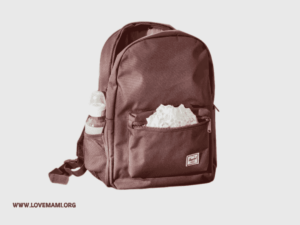When your child begins to express discomfort or disgust for sitting in a wet or soiled diaper, it’s usually a sign that they’re ready. They might wriggle, pull at their diaper, or make vocal clues like “wet” or “diaper,” which you might notice. This action suggests that kids are beginning to identify the feeling of being wet or dirty, which is an important first step in learning about their bodies’ cues to use toilets. When your child starts telling you when they need a diaper change, that’s another red flag to watch out for. They might come up to you and tell you they’re wet or dirty, or they can make motions or facial expressions that show they’re uncomfortable. Their actions indicate that they are growing more conscious. Their behavior indicates that they are starting to become more conscious of their body’s processes and are beginning to link the act of using the potty with the sensation of needing to go potty.
To use the 3-day potty training approach, parents can select any three days. However, because it takes a lot of time and concentration, many people prefer to begin over the weekend. In this manner, you can closely observe your youngster and pick up on their indications about when it’s time to depart. You should plan to spend the majority of those three days at home because you will need to watch and mentor your child attentively throughout this time.
Offer your child somewhat more fluids than usual during the three-day toilet training procedure, such as water, juice, popsicles, or watermelon. Your child will urinate more frequently as a result of this increased fluid intake, which will boost their chances of success by giving them lots of opportunities to practice using the potty. To encourage your child to drink more, you can also provide salty foods and foods that are high in fluid content, such as watermelon.
Pull-on diapers can be used for sleeping, but your child should wear underwear over the diaper to practice potty training while they sleep. This method teaches them to avoid going in their underpants, and the very sight of them seems to discourage them from peeing. In addition, many children begin to remain dry for naps and sleep after about a month of potty training—as long as parents are watchful. To encourage using the potty instead, it is advised to put on the pull-on diaper right before bed and take it off as soon as they wake up. But overnight training can be a different story, and, commonly, many youngsters need years to feel comfortable sleeping without the fear of bedwetting.
Potty training your child can go more smoothly if you mentally prepare them for it. Taking them shopping and letting them choose their underwear is one approach to involve them in the process. They may get excited about wearing them and feel more invested in the change from diapers as a result. To further help children understand the change that’s occurring, you can count the diapers that are left together and explain that after they’re gone, they won’t be coming back. Teaching your child to use toilets can also be accomplished by taking them along when you go or by emphasizing that older siblings or classmates also use toilets. This might encourage them and show them that using toilets is a normal part of maturing. Finally, you can help reinforce positive outcomes and boost your child’s confidence by integrating several practice sessions throughout the day, showing them the difference between wet and dry pants, and using a doll to illustrate proper toilet procedure.
Sure, having convenient access to the toilet can help with potty training. Having easy access to the toilet is advised while potty training a child. It’s advisable to get your youngster used to using a regular toilet, even though some methods recommend utilizing a child-sized potty. Using a step stool and a kid-sized potty seat adapter, you may increase the accessibility of the toilet. In this manner, your child will be able to acquire the necessary skill for successful potty training: autonomous toilet usage.
It’s beneficial to take your baby to the potty at specific times, such as first thing in the morning, before and after naps, after meals, and before bedtime, to help them develop a habit. Ask your child frequently if they need to use the potty in between these planned bathroom breaks, and encourage them to pay attention to their body’s cues. Although some parents find it more convenient to set a timer to remind their child to use the bathroom every 20 or 30 minutes, this method might not be the best one. Experts say that kids may find these frequent disruptions irritating and may even become resistant. Rather, you should watch for cues from your child, such as wriggling or gripping their genital area, that indicate they need to go. This method encourages a more organic potty practice and helps your child become aware of their body’s signals.
Detailed Guide to 3-Day Potty Training Method
The goal of the three-day potty training approach is to assist kids learn to use the potty soon by removing diapers for three days and promoting frequent potty use. The intention is to assist kids develop a routine around using toilets and increase their awareness of their bodies’ signals. Here’s a detailed explanation of how to use this method:
Preparation: Make sure your youngster is prepared for potty training before you begin. When someone is ready, they should be able to follow basic instructions, keep dry for extended periods, and have an interest in using toilets.
Day 1: Allow your child to go without diapers below the waist. Offer rewards or praise for successful toilet trips to encourage kids to use bathrooms regularly. Accept accidents and respond to them with composure and positivity. Every thirty minutes, use a timer to remind your youngster to use the potty.
Day 2: Carry out Day One procedures again, emphasizing using the toilet and rewarding successful trips. Introduce them to underwear and let them know it’s meant to be kept dry.
Day 3: Stick to the schedule in the hopes that your child will learn to understand their body’s signs and use the potty more frequently. As they succeed, encourage them to use the potty on their own.
Signs of Being Ready for Potty Training
Make sure your youngster is ready before beginning the three-day method. Seek out these indicators of preparedness:
⦁ Using words or gestures to communicate when it’s time to use toilets.
⦁ Expressing the need to urinate by squatting or holding their diaper.
⦁ Long-term intervals of dryness, which suggests bladder control.
⦁ Having the motor abilities required for potty training, such as the ability to undress.
Tips that increase the success rate
Whatever method you decide on, these pieces of advice can help the toilet training process go more smoothly:
- When your child needs to go potty, be prepared to help, especially in the beginning when they might not understand their body’s signs.
- Remind your child to use the potty on a gentle basis, particularly if they become distracted by something and might forget.
- Keep an eye on your child’s routines and support potty use during important periods, like right after meals or right after waking up.
- Reward and encourage them profusely after any accomplishment, no matter how tiny.
- Remain positive and patient in the face of obstacles. You and your child may have to go through a learning process when potty training.
What if the 3-day Potty Training Method doesn't suit your child
Some families find success with the three-day plan, but others might want to take a more progressive approach. It’s critical to select a method that fits both your family’s lifestyle and your child’s personality. Recall that there is no one “right” approach to potty training; instead, try a variety of methods until you find the one that works best for your child.
Summary
Potty training is an important milestone that calls for patience, understanding, and persistence. It doesn’t matter if you go with the three-day plan or something other; the important thing is to be upbeat and encouraging the entire time. Honor all of your child’s accomplishments, no matter how tiny, and provide comfort and support when they experience setbacks. You can successfully guide your child through this critical developmental time if you adopt the appropriate strategy and frame of mind.


















